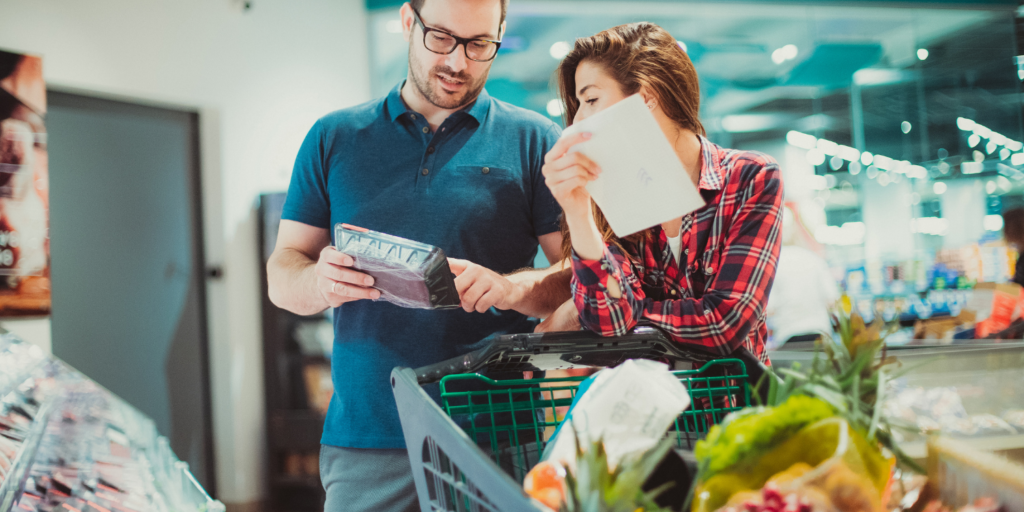Inflation Drives Consumers to Seek Lower Prices and Personalized Deals, Forcing Brands to Rethink Marketing Strategies and Customer Engagement
Grocery consumers in the United States are increasingly seeking lower-cost goods, signaling a shift in purchasing behavior driven largely by inflation, as outlined in R.R. Donnelley & Sons Co.’s “2024 CPG + Grocery Consumer Report.” This report, which surveyed over 1,800 U.S. adults, highlights consumers’ growing concerns over rising prices and how they are adjusting their shopping habits in response.
The survey reveals that more than half of consumers (55%) prefer to remain loyal to their current grocery store, with loyalty being particularly strong among baby boomers (61%) and those with higher incomes (64%). However, a significant 45% of shoppers are willing to switch stores in pursuit of savings, a sentiment more commonly expressed by millennials (50%). This divide in consumer behavior illustrates the tension between brand loyalty and the hunt for cost-effective options amidst economic pressures.
Beth Johnson, a grocery industry expert and director of client strategy at RRD, emphasizes the increasing caution exhibited by shoppers. “Consumers are becoming more judicious with their purchasing decisions, in large part due to the continued impact of external factors including inflation,” Johnson stated in the report. She further suggests that brands need to adjust their marketing strategies to emphasize value and savings to retain customer loyalty.
Consumer frustration with rising costs is widespread, with 88% of respondents expressing concern over inflation affecting various categories, including groceries, gas, and dining. Notably, grocery shopping has become a significant pain point, with 86% of shoppers troubled by increasing food and beverage prices. This concern is especially pronounced among baby boomers (87%) and households earning $100,000 or more (79%).
The report also found that consumers are modifying their shopping behaviors, adopting strategies such as stocking up during sales (41%), buying fewer items (37%), switching to more affordable name brands (37%), opting for private-label brands (35%), using more coupons (34%), and sticking to their shopping lists (32%).
The trend toward increased coupon use is particularly noteworthy, with coupon redemption in mass and variety/discount stores growing by 9% and 37%, respectively, compared to the first half of 2023. In terms of store selection, 68% of consumers prioritize convenience and proximity, a factor that baby boomers especially value (76%). Despite the focus on convenience, 32% of shoppers still seek an engaging shopping experience, even if it means traveling farther — a trend most common among Generation Z (39%), millennials (37%), and parents (38%).
Shoppers’ desires extend beyond mere savings. According to the report, consumers are looking for more personalization in their grocery experience. Key factors include relevant deals (59%), personalized discounts (55%), and tailored product recommendations (52%). In line with this desire for a more localized approach, 57% of shoppers prefer stores featuring locally produced goods, and 56% want to see more advertising for locally grown or produced products.
When choosing a retailer or brand, consumers rank fair pricing as their top priority (58%), a figure that has risen by 5 percentage points since last year. High-quality products (45%) and access to coupons and discounts (41%) are also key factors driving purchasing decisions. Additionally, data privacy has become an increasingly influential consideration, with 39% of respondents indicating it affects their shopping choices — a significant 19-percentage point increase from the previous year, according to the report.
The changes in consumer behavior point to a need for brands and retailers to rethink their engagement strategies. Michelle Garcia, Director of Client Strategy for Consumer Packaged Goods, notes, “Consumers are becoming increasingly strategic in their shopping habits, a reflection of the pressure they face from rising costs.” She suggests that brands position themselves as a smart alternative to dining out, offering both savings and premium options to appeal to a range of consumer preferences.
Similarly, Michael Mathias, Chief Growth Officer/SVP of Digital Media & Martech, stresses the importance of balancing convenience with a compelling shopping experience. He states, “Shoppers today are balancing convenience with the desire for a meaningful shopping experience. This shift presents a challenge for retailers.” Mathias points out that while loyalty programs and personalized offers are recognized as effective strategies, there often exists a gap in their implementation. Retailers must adopt a marketing culture that continuously tests and learns to bridge this gap effectively.




















